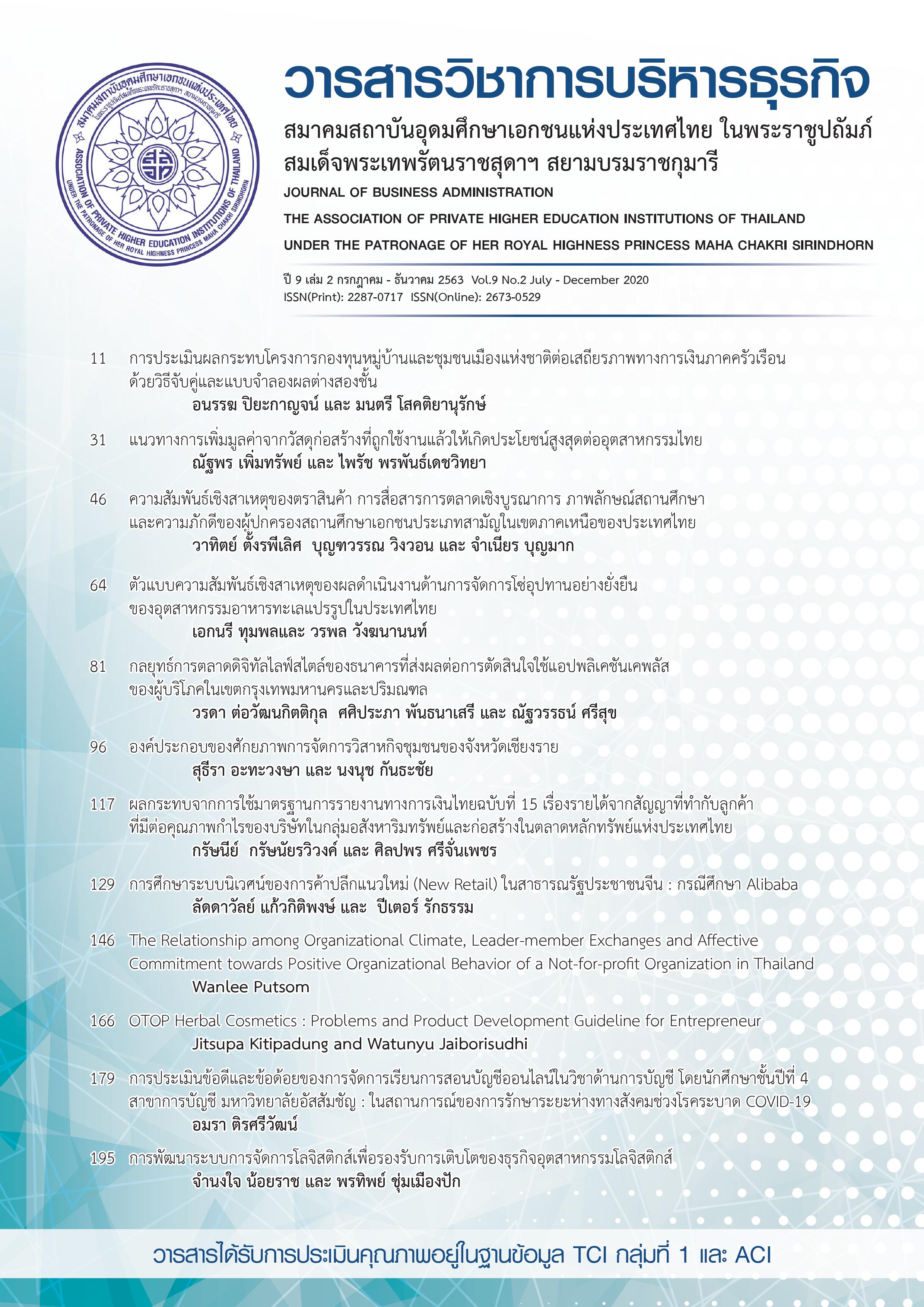OTOP Herbal Cosmetics: Problems and Product Development Guidelines for Entrepreneurs
Keywords:
Product Development, OTOP, Herbal Cosmetics, Self-RelianceAbstract
This research examined problems and guidelines to improve the capacity of self-reliance and creativity
in terms of product development for OTOP herbal cosmetics entrepreneurs. The study used the qualitative
methods of in-depth and group interviews. The results revealed that the problems in herbal cosmetics
development included the lack of unique herbal recipe development, the lack of specialized agency to
conduct ongoing research and development, the lack of modern marketing knowledge to access the need
of the target customers, and the lack of long-term supports from the government and private sectors.
Regarding the guidelines of OTOP herbal product development, the entrepreneurs should differentiate their
products using unique innovative or traditional recipe development, packaging should be developed with
modern and practical designs, and current market demand in product development should be explored
to match with consumers’ demand. Moreover, the government agencies should launch a policy which
continuously encouraged holistic Thai herbs research, together with the development of research and
development center to transmit technological and innovative knowledge in herbs to the entrepreneurs.
There should also be a project focusing on supporting the advancement of entrepreneurs in specialized
herbal products.
Downloads
Published
How to Cite
Issue
Section
License
บทความที่ลงตีพิมพ์ในวารสารวิชาการบริหารธุรกิจ สมาคมสถาบันอุดมศึกษาเอกชนแห่งประเทศไทยต้องเป็นบทความที่ไม่เคยได้รับการตีพิมพ์เผยแพร่ หรืออยู่ระหว่างการพิจารณาตีพิมพ์ในวารสารอื่นๆ การละเมิดลิขสิทธิ์เป็นความรับผิดชอบของผู้ส่งบทความโดยตรง


